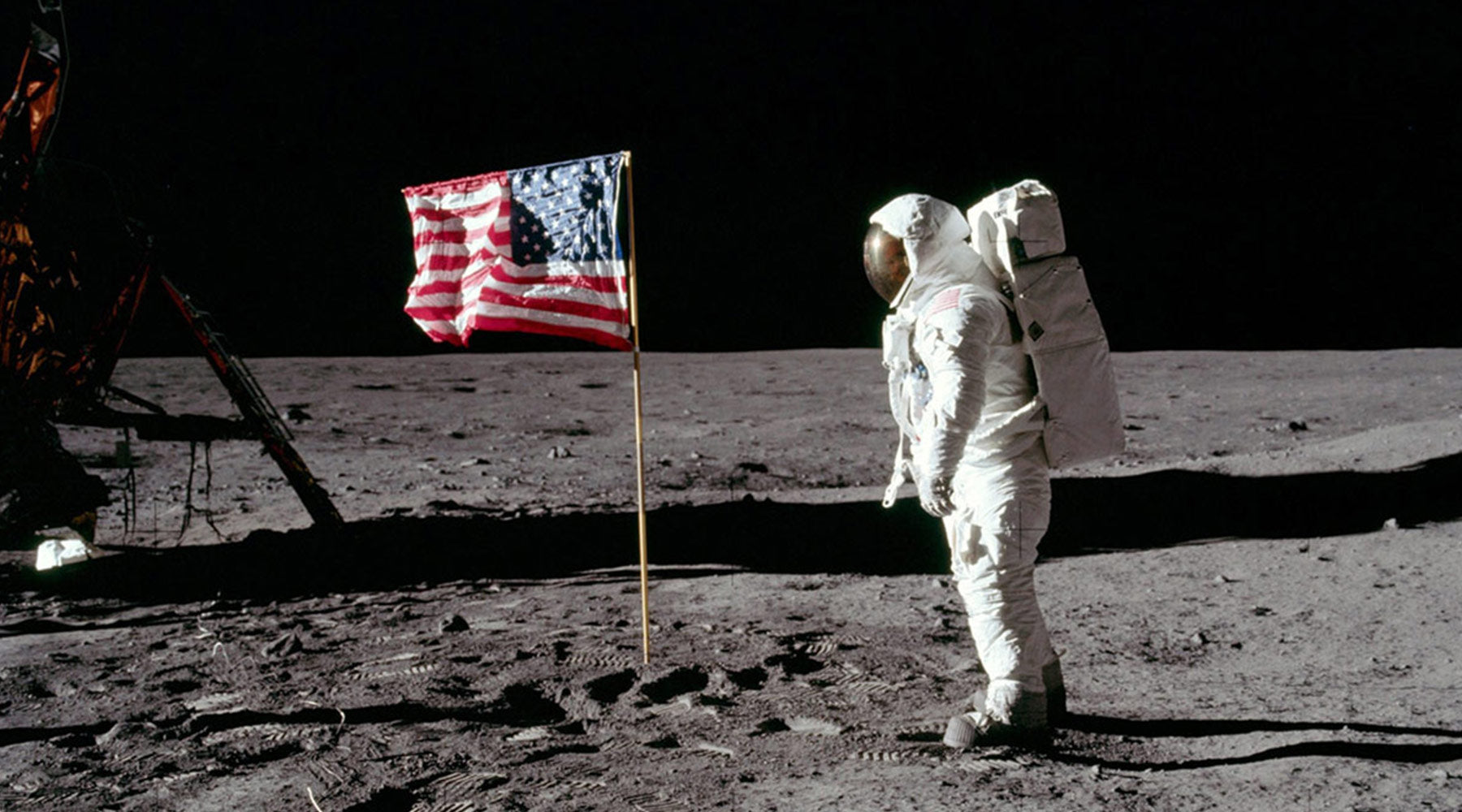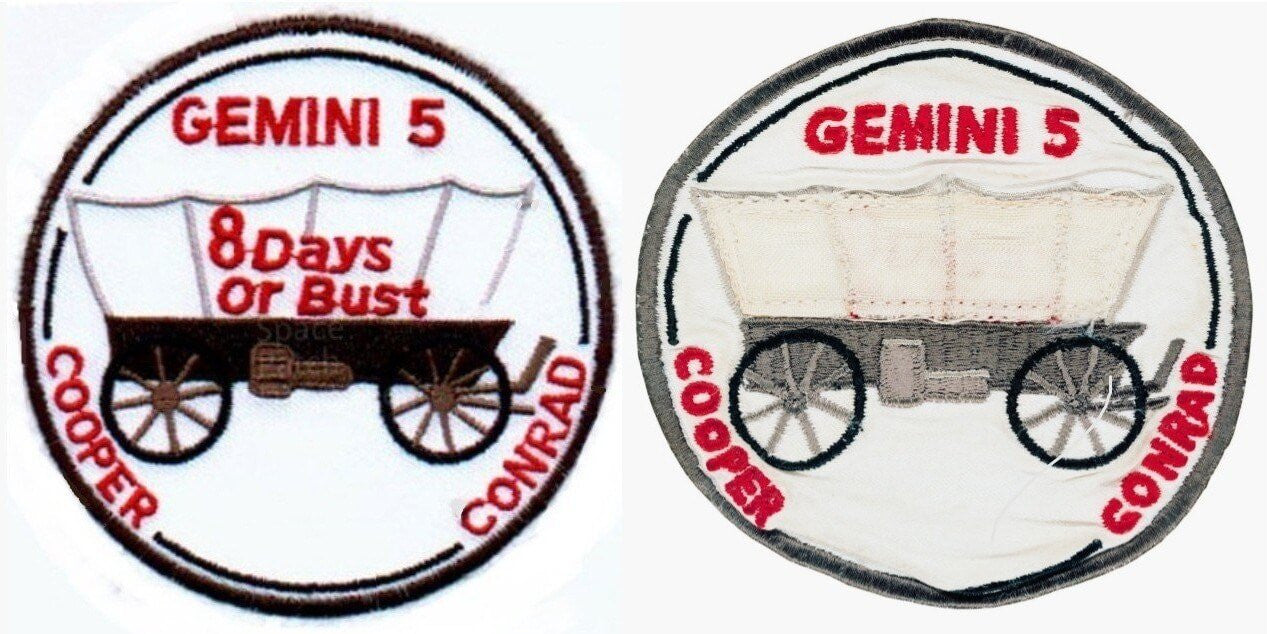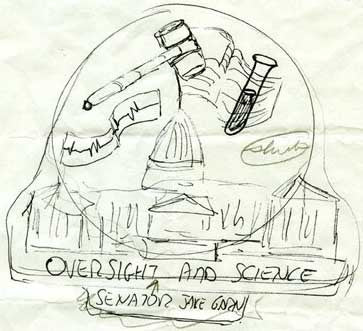Your Cart is Empty
10 Things You Didn't Know About NASA Patches


Once you're into patches, there is no way back. Last year I did a post on National Park patches and this time NASA seemed like the perfect fit to explore. I ended up buying a bunch of patches on eBay to get the feel for design and quality and in my research process this post started to shape up.
NASA continues to inspire generation after generation and I’m excited to feature a few facts about NASA patches that you probably didn’t know about.
1. First NASA Patch - 1965
A long tradition of military patches carried over to space exploration. The first space patches were created by the Soviet Union in 1963 for astronaut Valentina Tereshkova for the Vostok program. Valentina wore her patch on her shoulder in a military style, though the public couldn't see it because it was hidden by her space suit. Things had to be improved.
NASA introduced its first space patch during the 1965 space mission of Gemini 5. It was a simple design created to commemorate the flight and contained the slogan “8 Days or Bust” (the flight actually took 7 days, 22 hours, 55 minutes). Named the Cooper Patch, it started a trend of creating unique patches for every NASA space launch from then on.

First two NASA missions didn’t have patches. Nobody from the top required it and astronauts didn’t show interest in having patches on their suits. A few months before the launch of Gemini 5, Gordon Cooper had a chat with Pete Conrad and said they’ve never been in a military unit that didn’t have patches. They decided to fix it.
Pete’s father in law had this old wagon that seemed like a very cool symbol of first settlements in America and of transporting supplies. They saw it as a perfect fit to use the wagon as their symbol of pioneering space.
Out of all the goals for this Gemini 5 mission, a big one was to surpass the Soviet Union in how long the astronauts stayed in space. Vostok was in space 4 days 23 hours and 7 minutes. Gemini 5 had an objective to be in space 8 days.
That’s how the phrase “8 Days or Bust” came to be. But nobody wanted to mention it ahead of time to the press in case that won’t be achieved. 
Gordon and Pete made 100 of these patches. They hand sewn them on their suits.
Every space mission has a tradition of having informal dinner before press conferences and start of the mission. They had a small gathering at the house of the first director of NASA. The conversation about the patch quickly spread around the room and Jim Webb, in charge of the NASA budget at that time, who was completely against all personalization of NASA missions. It almost got to a fight.
When everyone cooled down a bit, Gordon Cooper explained that patches are a bit part of mental preparation and are a very important symbol in any military mission. Gordon didn’t have that patch with him at the dinner, so they mostly were just talking in general about patches.
Jim said he’ll think this over the next day and called back saying both astronauts can go ahead on having the patch on their suits. The only thing - 8 days had to be dropped in case this goal won’t be achieved. That would have been a major press backlash. They passed the goal by 104 minutes.

A few people who were close to Gordon and Jim say the conversation could not have been this heated. Most likely Gordon exaggerated a bit when he described these events in his book later on. In any case, this was the start of a long tradition of NASA patches.
Those first 100 patches are now very rare and are definitely had to find and you’d have to pay a good sum of money to their owners to patch with such a collector item.
2. Team Building at Its Best
It’s hard to top such an awesome story as what you’ve just read. But I think this #2 fact about NASA patches is even more exciting to me.
Every NASA mission has an objective or a goal. When the team gets this assignment, the first thing they do …. Is get in a room and come up with a patch design and a mission name. I just love this!
Most mission crews were fully responsible for designing their own patches. Occasionally, a professional graphic designer was involved to help finalize the design. But the main things stays the same - patch making is that bonding time that every NASA mission crew goes through.
Here is the original sketch artwork for NASA patch STS-51D. You’ll see some designs in this post that really do look like someone other than a graphic designer made them. It’s an interesting challenge for the diverse crew to create a single design to symbolize their mission.
3. Made in America
A-B Emblems was where Gordon Cooper went to produce the first 100 NASA mission patches for Gemini 5. Since 1971, all NASA mission patches have been made by A-B Emblem, a company located in North Carolina that also produces patches for the military, the Boy Scouts and the Girl Scouts.

I wouldn’t expect it to be otherwise. It’s not common for many patches these days to be made in the USA. I personally ask for my patches to have connecting thread be cut off manually by hand on every design. In the USA that would have exploded by cost of making patches, but I found a great manufacturing partner that has the same quality standards that only a select few can uphold to.
A-B Emblem also produced the original NASA logo back in 1962.
4. Can You Get Lucky in Space?
So many things go wrong in space. It’s definitely a very calculated gamble on your life when you board the space shuttle to head to space.
All missions are sequentially numbered under each space program and just so happens that the crew of this mission got their landing date as Friday, April 13th. The mission had an original number STS-13, which later became STS-41C.

The crew created their alternate patch as a joke. They also had the main proper patch. Alternate patches usually didn’t get approval by NASA since space travel is a serious matter after all.
This design was meant to mock all the ways that the number 13 could be unlucky for space flights. Symbols include a black cat that the shuttle needed to fly underneath to escape, and the nicknames of each crew member CRIP, DICK, TJ, OX and PINKY on it. This patch is extremely rare, as less than twenty were ever produced. They go for about $750 these days.
The mission safely got back to Earth without any major issues.
5. Bird Power
What do you do when the strangest things happen when you least expect them? How about this fact: a woodpecker had chosen the external tank on a space shuttle for STS-70 mission as a target for drilling holes. It was a very strange incident that had postponed the original launch.

That woodpecker drilled 71 holes, most being 4 inches wide. He did this for about a months and nobody noticed him, except for the security cameras which were later reviewed to figure out what exactly happened to the shuttle.

The damage to the insulation was so extensive that the launch was delayed several weeks for repairs. In honor of the woodpecker, a patch featuring Woody Woodpecker was designed.
6. One Launch Per Month
There are a total of 9 different major programs with multiple missions (~150 in total) under each program. The Space Transportation System is one of the most famous NASA programs of all times.
Started in the 1960s, the original idea was to conduct one launch per month, have a permanent, manned space station orbiting around the Earth, and get a human on Mars by 1983.

We all know that we’re not as close as we wanted to be from having humans on Mars and one launch a month. Few of the original ideas of the Space Transportation System made it to reality, though the program was essential for the Apollo 11 moon landing in 1969.
7. Getting Scientific - µg

µg - microgravity symbol. The STS-107 mission was conducted for research purposes and focused specifically on microgravity and Earth science research. The 16 day trip was a success, and the patch representing it contains the microgravity symbol, µg, coming off from the rays of the astronaut symbol. The sunrise in the corner represents the exciting new era of scientific discovery that was beginning with the space program.
8. Simulating Space Conditions

Before the Apollo program was officially launched, NASA tried to simulate space conditions on Earth to prepare astronauts as much as possible. One of these tests, called 2TV-1, was conducted in the manned spacecraft center in Houston, Texas within a huge vacuum chamber that represented space flight. The patch for this mission featured a roadrunner bird (Native to Texas) that isn't able to fly, a poignant symbol for this EarthBound mission.

9. Apollo 11 Patch
There is no moment in space history that is more recognized than Moon landing of Apollo 11. It’s the most famous mission and patch.

When the crew got to work on the patch, they decided to drop their names from the design to symbolize that moon landing is the achievement of so many people who worked on making Moon landing a possibility. They also wanted the number on the patch to be internationally recognized and debated whether 11 or XI or even ELEVEN. Lance Armstrong was against the idea of writing the number out.
One of the friends of the crew and fellow astronaut Jim Lovell proposed to use the eagle as the symbol of the United States of America. Michael Collins found the eagle in a National Geographic book in the library and traced it with a tissue paper.

Right away he added the moon in the background. He clearly knew the proportions and eyeballed it to be almost exactly correct. The shadows of the eagle and the moon are not matching. Nobody fixed this mistake.

The crew continued to work on the patch and the next design element was the olive branch, originally placed in the beak of the eagle. The Director of NASA Bob Gilruth said the eagle looks too aggressive and it’s better the put the olive branch in the claws. The design was complete.
Michael Collins was still now happy about the olive branch placement as it was clearly an obstacle for the eagle to land on the moon conveniently.
10. Asilda NASA Favorites
Some of the most colorful designs were made for transport missions and even though they look gorgeous, the missions themselves were less of a milestone in space history compared to Apollo 11.
Here are some of my favorite designs that I purchased on eBay and scanned later. I had to narrow it down to top 10 or you'd just keep scrolling endlessly. Thanks for checking out this post and be sure to see all best selling iron on patches and pins on Asilda Store.










Image Sources:
http://www.airspacemag.com/photos/top-nasa-photos-of-all-time-9777715/
http://www.spacepatches.nl/sts_mis/Garn.html
http://www.joshgulch.com/index/sts127.html
http://www.spacepatches.nl/sts_mis/sts13.html
https://science.ksc.nasa.gov/shuttle/missions/sts-70/images/woodpecker-on-et.jpg
https://waterfowlstampsandmore.com/wp-content/uploads/2016/12/Ap11Patch_eagle_detail.jpg
https://www.hq.nasa.gov/alsj/a11/A11_PAOMissionReport.html
Also in Asilda Blog

Why I started Vlogging - My 3 Reasons
The first month of vlogging is done and now I get asked more and more about why I started all this, and especially right now. So here are my three reasons.
Read More
Cecilia Humboldt Camera Backpack Review
Join me in reviewing this Cecilia Humboldt 14L in Black Leather Camera Backpack I got to test out. The leather is buttery smooth and the bag is very enjoyable to use.
Read More
Neon Signs: A Symbol of America
When you think Americana, neon signs are always a big part of the visual. In this article, you'll find out about the history of neon signs...
Read More

